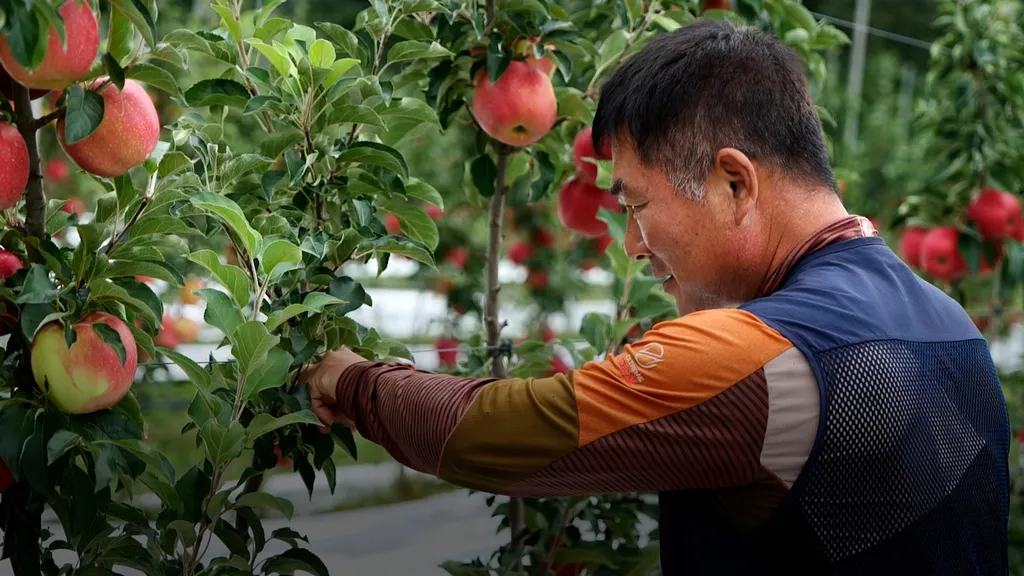In the heart of South Korea, researchers are unlocking new secrets to combat one of apple orchards’ most devastating diseases: fire blight. A recent study led by Na Ra Lim from the Interdisciplinary Program in Smart Agriculture at Kangwon National University has shed light on the potential of a promising biological control agent, Bacillus altitudinis strain KPB25, to disrupt the cycle of this ruinous pathogen.
Fire blight, caused by the bacterium Erwinia amylovora, is a significant threat to apple and pear production worldwide. Traditional control methods often rely on chemical agents, which can have environmental drawbacks and contribute to resistance development. The search for effective, eco-friendly alternatives has led scientists to explore the potential of beneficial microbes.
Lim and her team investigated how KPB25 treatment influences the bacterial communities residing on and within apple tree leaves. Their findings, published in The Plant Pathology Journal (translated as “Plant Disease Research”), reveal that KPB25 doesn’t just sit idly by; it actively reshapes the microbial landscape.
“KPB25 treatment resulted in increased community richness and diversity in endophytic bacteria, which are the bacteria living inside the plant tissues,” Lim explained. This shift in the microbial community structure is thought to create an environment hostile to E. amylovora, making it more difficult for the pathogen to infect its host.
The study found that certain bacterial families, which became more abundant following KPB25 treatment, play crucial roles in sugar oxidation and antibiotic production. These processes likely contribute to the suppression of fire blight by altering the apple tree’s internal environment.
The commercial implications of this research are substantial. As consumer demand for sustainably grown produce continues to rise, the development of effective biological control agents like KPB25 could revolutionize pest management strategies in the agricultural sector. By reducing reliance on chemical controls, orchardists can minimize environmental impact, lower production costs, and potentially access premium markets.
Moreover, the insights gained from this study could pave the way for future innovations in microbial-based crop protection. As Lim noted, “Understanding how beneficial microbes interact with and alter plant-associated communities is key to developing novel biocontrol strategies.”
The energy sector could also benefit indirectly from these advancements. As agricultural practices become more sustainable, the overall environmental footprint of food production decreases. This shift can contribute to a more balanced ecosystem, supporting the broader goals of renewable energy and climate change mitigation.
While the road from lab to orchard is long, the promise of biological control agents like KPB25 offers a glimpse into a future where nature’s own defenses are harnessed to protect our crops. As researchers continue to unravel the complexities of microbial interactions, the agricultural industry stands poised to reap the benefits of these microscopic allies.

